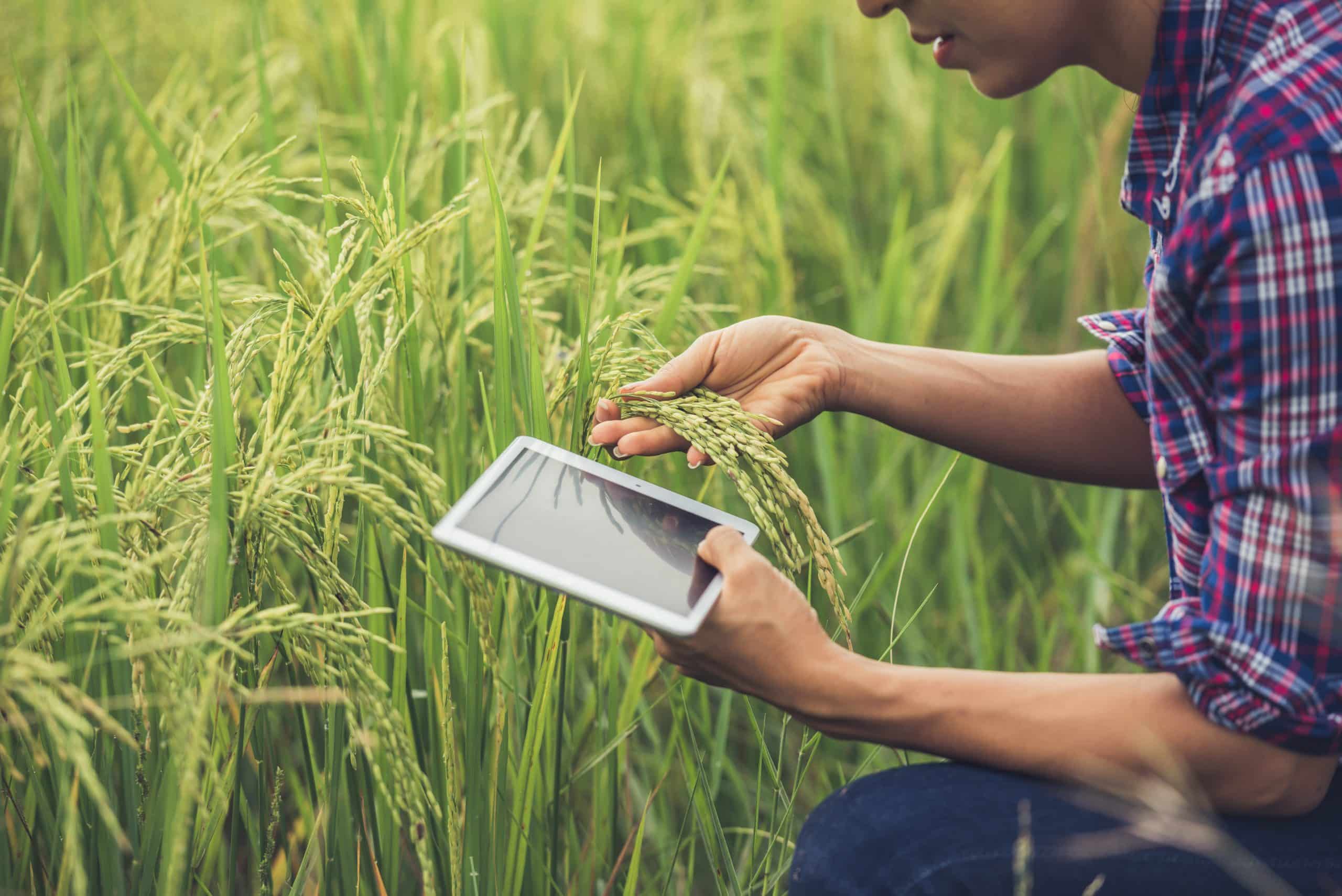
‘Windy City’ aims to be fully renewable powered by 2025
Chicago started this week with the unveiling of a ‘green agreement’ . Mayor Lori E. Lightfoot announced an agreement which would help meet the commitment to purchase renewable energy for

Home to over 68% of India’s population (Census of India 2011), the rural economy in India primarily revolves around agriculture and allied industries. And although these industries added only 16.7% to India’s Gross Domestic Product (GDP) for the year 2019 (World Bank), they employed 43% of the population. Globally, agriculture and allied industries are employing fewer people than ever as manufacturing and services take the center stage. Nevertheless, they are still the single-biggest source of subsistence for the majority of people.
But this disparity between value addition and employment generated — often interpreted as a marker of disguised unemployment — is seeing a reversal in recent years. According to a release by the Press Information Bureau (PIB) based on data from the National Statistical Office (NSO), Ministry of Statistics & Programme Implementation, Government of India, the share of the Gross Value Added (GVA) of agriculture and allied sectors has improved from 17.6% in 2018-19 to 18.4% for 2019-20 and further to 20.2% for 2020-21.
Of course, a large part of this is the result of enhancement of share in budget allocation, launch of government schemes, policies such as the Model Contract Farming Act, 2018, etc., but initiatives taken by the private sector are beginning to bear tangible results too. In this context, Bain & Company, in collaboration with the Confederation of Indian Industries (CII), released a report titled Innovations in India’s Rural Economy.
The report highlights how “Disruptive business models are stimulating inclusive growth in agriculture and rural finance,” heralding how the agriculture economy is on the “cusp of massive disruption.” While the adoption of mechanization and capital-intensive farming gained traction only very slowly owing to various problems like land holding and availability of financial aids, technology promises explosive growth in the sector now.

The moment is ripe for both startups and traditional players to “introduce disruptive business models that address inefficiencies,” the report summarizes. Farmer Producer Organizations (FPOs) are better poised than before to make use of technology even as they become digitally savvy themselves.
Seeing as agriculture contributes 37% to rural GDP, it is only expected that it would comprise a major chunk of credit demand. However, this demand has historically been weak and fragmented at best. Recent developments indicate a reversal of trends however. Agri credit has grown approximately 10% in the last five years, from around INR 8 lakh crores (USD 105 billion) in FY15 to approximately INR 14 lakh crores (USD 184.5 billion) in FY20, the report points out.
The chief catalysts behind this development are rapid rural digitization and increased technology affordability, initiatives for financial inclusion, improved infrastructure and access, renewed investor focus, and an increase in the number of startups that have come to empower the farming community.
The report lists examples of how different startups have entered at different value chain stages to churn out new business models. For instance, at the input stage, KrishiHub provides crop- and weather-related information services through an advisory platform. BigHub has built an online marketplace for farm inputs. Likewise EM3 too has created a platform, but for equipment sharing and ‘pay-for-use’ services.
At the sowing or harvesting stage, BharatAgri facilitates smart/tech-enabled sowing. Plenty develops indoor vertical farming while FlyBird Farm Innovations employs automation in farming activities to reduce water and electricity usage. During processing and distribution, Our Food offers smart-processing business models while StarAgri provide seamless transportation and warehousing. Ninjacart reduces distribution inefficiencies by providing e-trading, online marketplaces, and supply chain management.
On the other end, for services, GramCover offers data-backed risk mitigation. Ergos enables farmers to convert their grains into tradeable digital assets. Indo Ag delivers integrated play by offering agronomy advisory services, quality testing, contract farming, an offtake marketplace, and storage and transportation services.
The rural microfinance sector has risen rapidly — from around INR 1,22,500 crores (USD 16.1 billion) in December 2019 to approximately INR 1,46,700 crores (USD 19.3 billion) in March 2021. This has translated into agri-credit growing at approximately 10% in Compound Annual Growth Rate (CAGR) terms.
The report outlines how, driven by government interventions like the Payment Infrastructure Development Fund, access to digital payments is gaining ground. It is noteworthy that Unified Payments Interface (UPI) now processes eight times more transaction value than credit cards. Further, the rural microfinance sector has risen rapidly — from around INR 1,22,500 crores (USD 16.1 billion) in December 2019 to approximately INR 1,46,700 crores (USD 19.3 billion in March 2021. This has translated into agri-credit growing at approximately 10% in Compound Annual Growth Rate (CAGR) terms.
With the introduction of new business models, direct access to farmers has emerged to encourage new practices, contractual engagements for input and output marketplaces, and credit lending agreements. The report states that small farmers, who did not have access to low-cost funds due to limited documentation verifying cash flows, capacity to provide collateral, visibility on credit history, and capability to develop business plans have an opportunity with the emergence of integrated FPO efforts that can vastly build the capacity of farmer groups.
Nevertheless, a few areas require attention, such as investment in post-harvest infrastructure. The report estimates that post-harvest losses range from 20% to 40%, depending on crop variety. The government is indeed considering a public-private partnership (PPP) model to construct steel silos for storage of crops but there remains a need to have a “vast, comprehensive distributed and connected storage infrastructure, which can be achieved through the right collaboration between FPOs, government agencies and private partnerships,” the report opines.
Other suggestions to encourage investment in deploying scientific practices includes making funding accessible to FPOs, Farmer Producer Companies (FPCs), and private players. The INR 1,00,000 crore (USD 13.1 billion) financing facility launched under the Agriculture Infrastructure Fund in August 2020 is a major step in this direction. Finally, the report concludes that technology-enabled and personalized credit risk analysis will help improve the financial inclusion of millions of farmers who are still outside the organized financial ecosystem.
While the Indian agriculture sector, along with allied units, has languished for far too long, its newfound resurgence — as witnessed by the recent attention and investments mentioned earlier — will surely not just provide an impetus to the country’s economy, but also promote a more inclusive growth and take a step towards a food sustainable future. The report by Bain & Co. and CII is a signal of how serious the industry is about assessing the opportunities of the agriculture sector in India.

Chicago started this week with the unveiling of a ‘green agreement’ . Mayor Lori E. Lightfoot announced an agreement which would help meet the commitment to purchase renewable energy for

The US National Oceanic and Atmospheric Administration (NOAA) is collaborating with Nvidia and Lockheed Martin to build the Earth Observation Digital Twin, or EODT. This niche Digital Twin application will

The COVID-19 pandemic has stalled the design, development, and construction of airports worldwide…

When he was 10 years old, growing up a farmer’s son in a small village in Zhejiang Province of China, Kongjiang Yu fell into a river. The water flowed slowly,
© Geospatial Media and Communications. All Rights Reserved.